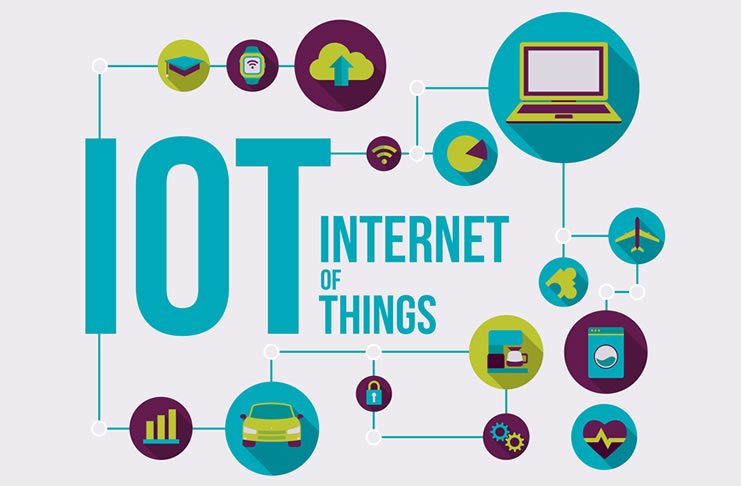The Impact of Digital Equity: Ensuring All Students Have Reliable Internet Access
The article discusses the importance of digital equity in ensuring all students have access to reliable internet and the skills to use it...
You must be logged in to the LATechNet portal to view additional resources.
4 min read
 Aria - LATechNet Team
:
Jun 1, 2025 6:02:25 AM
Aria - LATechNet Team
:
Jun 1, 2025 6:02:25 AM

Technology has a habit of shaking things up, especially in education. Remember when computers first showed up in classrooms, or when online learning suddenly became the norm? Each time, schools had to quickly adapt and rethink how students learn and teachers teach. These big technological disruptions aren't just about shiny gadgets or new software—they change how we connect, communicate, and share knowledge.
That's why it’s so important for schools to get ahead of the curve. Being proactive means you're ready when the next big tech wave hits. Instead of scrambling to catch up, educators can smoothly welcome new tools and methods into their classrooms. By preparing now, schools can turn disruptions into opportunities, making learning more exciting, effective, and accessible for everyone. It's all about being ready to ride the next wave, rather than being swept away by it.
When a new tech disruption comes along, teachers often find themselves learning on the fly. But continuous training and professional development can make the transition smoother and less stressful. The COVID-19 pandemic taught us a huge lesson: when teachers are prepared, students thrive—even during unexpected shifts to remote learning. It highlighted the urgent need for ongoing training in technology integration and distance learning tools, ensuring no student gets left behind in the digital divide (time.com).
Another powerful approach is creating Collaborative Professional Learning Communities. Imagine teachers and researchers working together to design curriculum that incorporates exciting new tech like AI and augmented reality. These communities can also help teachers confidently guide students through meaningful conversations about ethics, data privacy, and the broader implications of technology, preparing them for a rapidly evolving future (arxiv.org).
Imagine trying to complete homework without reliable internet—unfortunately, this was the reality for about 17% of students in 2020. The digital divide isn’t just about technology; it directly impacts learning opportunities and student success (skillprepare.com). Schools play a vital role in closing this gap. Investing in infrastructure, forming community partnerships, and creating device lending programs are effective ways educators can ensure all students have fair access to online resources.
Beyond just devices, having a stable and reliable internet connection is essential. Innovative solutions like community Wi-Fi hotspots provide internet access in neighborhoods and public spaces. Schools can also partner with local businesses and government agencies to build stronger internet infrastructure. These collaborative efforts mean every student, no matter their background, can participate fully in modern, tech-driven education.
When new technologies like AI burst onto the educational scene, it's essential for schools to have flexible tech policies that can adapt quickly. Rigid policies just won't cut it when technology evolves at lightning speed. Instead, schools should adopt iterative guidelines that grow and change alongside tech advances. These policies should clearly address ethical concerns, like fairness and bias in AI, and provide practical steps for how new tools will be deployed in classrooms (arxiv.org). Institutions doing this well often involve educators, students, and tech experts in regular policy reviews, ensuring their guidelines remain relevant and responsive.
Alongside flexibility, safeguarding student data and privacy is critical. Schools should create clear, transparent policies about how student data is collected, used, and managed. Effective strategies include using simple, accessible language to communicate privacy guidelines and regularly holding workshops or discussions with teachers, students, and parents. This openness builds trust and ensures everyone feels confident and secure in an increasingly digital classroom environment.
Imagine bringing history lessons to life by virtually walking students through ancient ruins or exploring the solar system right from their desks! Technologies like Augmented Reality (AR), Virtual Reality (VR), and Artificial Intelligence (AI) open up exciting opportunities to create immersive learning experiences. Research shows that these tools can increase student engagement, understanding, and motivation by making abstract concepts tangible and interactive (mdpi.com). For instance, some schools have successfully introduced VR headsets to teach biology, allowing students to virtually dissect organisms without the mess and expense!
However, integrating these advanced tools isn't always easy. Common challenges include limited teacher training, gaps in technical expertise, and outdated school infrastructures. Schools that have successfully navigated these hurdles often create strong support systems, providing ongoing teacher training, consistent technical support, and strategic investments in infrastructure upgrades. These proactive steps ensure technology integration is meaningful, sustainable, and beneficial to everyone.
To successfully navigate the next big tech disruption, schools must foster a growth mindset—encouraging educators and students alike to warmly embrace change and innovation. When teachers model openness and curiosity, students learn to approach new technology not with fear, but with excitement and creativity. By cultivating resilience and encouraging creative problem-solving, schools help learners become adaptable, ready to face unexpected challenges and turn them into opportunities.
Another powerful way to build adaptability is through collaborative ecosystems. Imagine educators, tech providers, policymakers, and researchers all working together, sharing their insights, successes, and even failures. These partnerships create a supportive network, making it easier to collectively solve problems and leverage everyone's strengths. When schools actively participate in these collaborative communities, the entire educational landscape benefits—growing stronger, more innovative, and better prepared for whatever technological disruptions lie ahead.
When it comes to navigating new technology in education, LATechNet is like having a friendly expert right by your side. With deep experience in educational technology integration, they understand that every school is different. That's why they offer customized professional development programs, carefully designed to equip educators with the exact tech skills they need to feel confident and prepared.
Beyond training, LATechNet helps schools bridge the digital divide by guiding them in infrastructure planning, managing devices, and offering smart connectivity solutions. They also assist schools in crafting ethical, flexible, and comprehensive technology policies, ensuring everyone's on the same page.
And the support doesn't stop there. LATechNet provides ongoing technical assistance, security management, and training, empowering schools to smoothly adopt and sustain new tech. Plus, they foster a collaborative innovation culture, helping educators and schools confidently embrace and leverage future tech disruptions together.
As we've learned, technology doesn't stop evolving—and neither can our schools. Being proactive about preparing for the next big tech disruption isn't just smart; it's essential. By staying ahead, educators and schools can turn challenges into exciting chances to grow and improve learning experiences for students.
Now more than ever, school leaders, teachers, families, and communities need to come together. Investing in new technologies, collaborating openly, and innovating creatively will help build a strong, flexible education system—one ready to face whatever tech surprises come next. Let's work together to ensure our students don't just keep up but thrive in a world that's always changing.

The article discusses the importance of digital equity in ensuring all students have access to reliable internet and the skills to use it...

The article examines the transformative impact of educational technology (EdTech) on modern teaching and learning environments. Key trends include...

The integration of IoT devices in modern classrooms offers enhanced learning experiences and operational efficiencies, transforming them into...